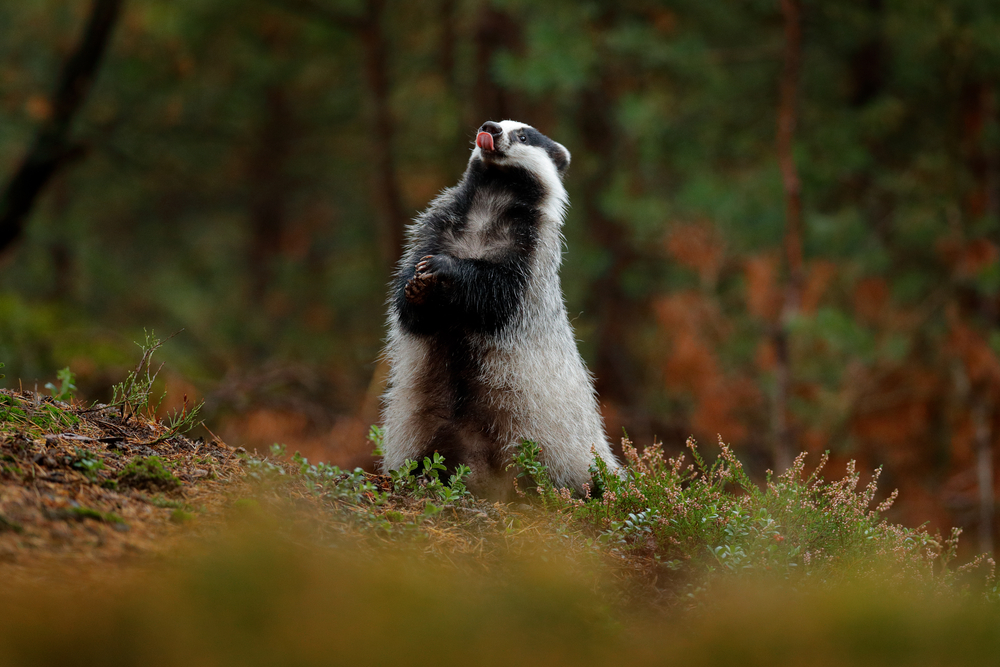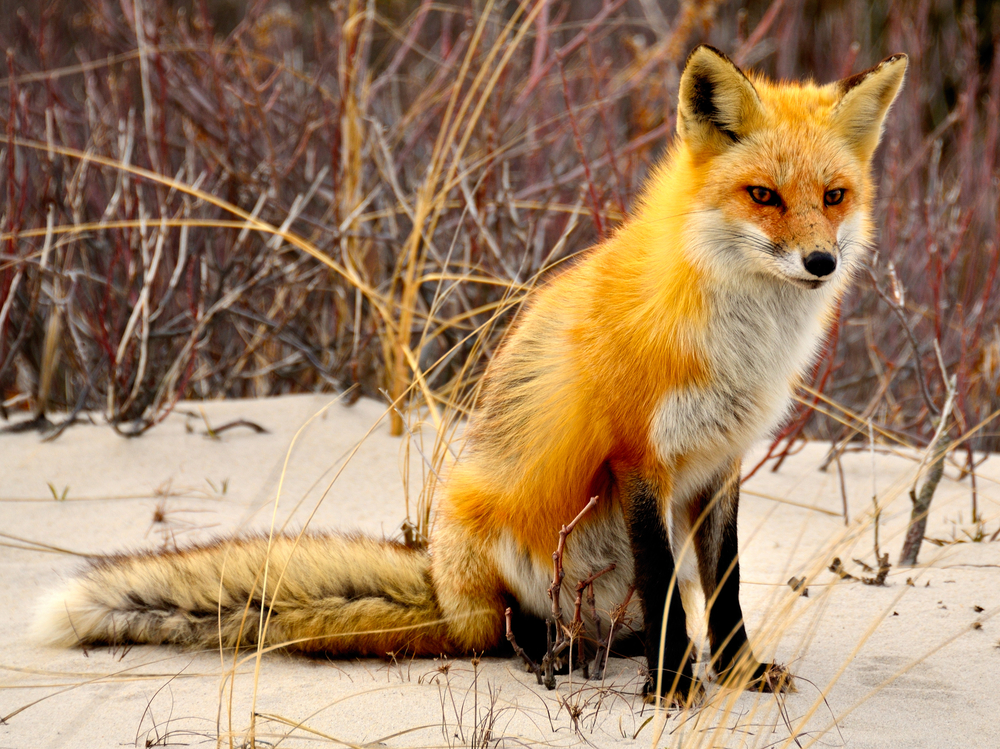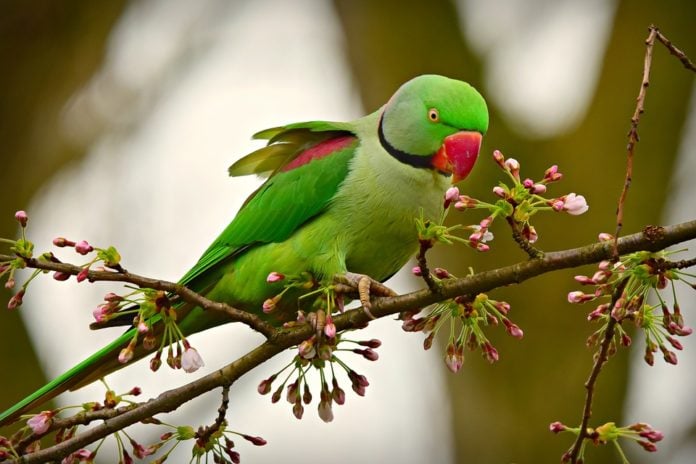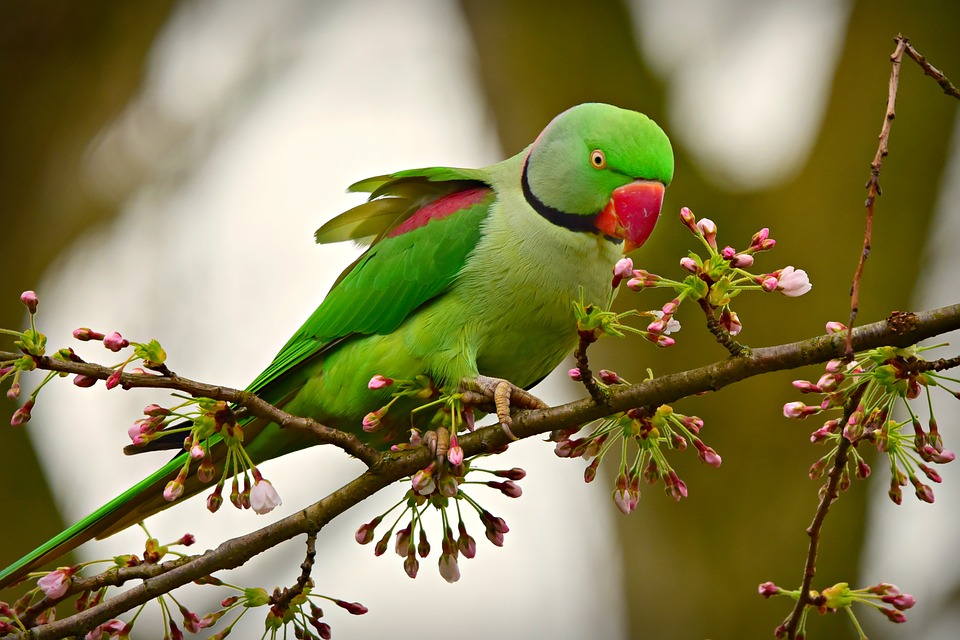Ever thought about taking yourself on a Dutch safari? You’d be surprised by the kind of wildlife you can find in the Netherlands!
Embark on this journey and have a gander; we guarantee you’ll soon be able to sort poezen from pluimvee (poultry) and ezels (donkeys) from the eenden (ducks) easily in no time.
Just stay away from any shady swan, which is all of them.
Parakeets fluttering through Amsterdam 🦜
If you’ve walked or rode through Vondelpark and caught a glimpse of what you think is a rose-ringed parakeet, chances are it’s not your imagination (or the shrooms you ingested).
These cheeky little birds are rumoured to have made Amsterdam their home after being accidentally released from an aviary at the zoo in the 1980s.
READ MORE | Spotting Dutch birds: a bird expedition from your own home
True to their nature, they took to flight, and it is now estimated there are roughly 3,700 living the city life plus another 10,000 throughout the Netherlands.
Their vibrant plumage and ability to mimic human speech are what make them so unique. They’re also considerably more appealing to look at when compared to pigeons.
If parakeets were cars, they’d be a Bentley, and those pigeons, an unremarkable Fiat. Sorry, not sorry, pigeons, but you didn’t make the “wildlife in the Netherlands” list today.
Seals off the island of Texel 🦭
Ahhh, don’t you love seals? Their inquisitive nature and portly figure make them ripe for enjoyment.
READ MORE | The 8 greatest forests in the Netherlands for a nature escape
We always found that most of their appeal stems from how they go from being so clumsy on land to graceful and fluid as they move through the water.
If you’re thinking of searching through the Dutch wildlife, and want to catch a glimpse of these sea hounds, then low tide off the coast of Texel is your best bet.
Here you’ll find the aptly named “seal banks” in the Wadden Sea.

Watch them raise their offspring, play with friends or soak up the sun as they lay about on these exposed sand bars.
Fun fact: the Wadden Sea is the world’s largest unbroken system of inter-tidal sand and mudflats! (Feel free to whip that out when you have visitors you want to impress.)
Badgers hiding out in Friesland 🦡
Don’t bother getting up early if you’re looking to do a bit of badger spotting whilst on a Dutch safari, as badgers are nocturnal by nature.
READ MORE | 5 Dutch nature reserves to stretch your legs and enjoy the sights
They can, however, be spotted at dusk and night in the Hoge Veluwe or the forests of Limburg, Friesland, Drenthe and Overijssel. But let op! Badgers are vicious when provoked.
Their diet is relatively healthy. Fruit, nuts, and a little bit of protein, such as mice, or even worms, are on their menu for dinner.

Until 1980, badger populations in the Netherlands decreased at an alarming rate. This can be attributed to poaching, large-scale land consolidation and sett-digging.
Luckily for the bulky-bodied and beady-eyed badger, in 1984, the Ministry of Agriculture, Nature Management and Fisheries outlined a conservation plan to protect them.
Since then, they have recovered and now enjoy a pleasant life meandering through the Dutch countryside at night, looking to pick up a quick meal or a badger girlfriend/boyfriend.
Foxes in the dunes of Scheveningen 🦊
Many of you probably already know this, but The Hague was originally built on dunes, so you can find such picturesque scenery just outside of the city limits near the coast.
READ MORE | Hiking in The Hague: 11 nature spots for the outdoor adventurer
It’s well worth venturing out of Amsterdam, Rotterdam or Den Haag on a Dutch Safari to take in the view, but the probability of a chance encounter with nature’s most mischievous omnivorous mammal makes it even more special.

Foxes are truly remarkable, and it’s believed that their hearing is so good they can hear a watch ticking from 40 yards away.
So, if you decide to take a cycle past their dunes, stay as quiet as possible and keep your eyes peeled.
Also, don’t tell your Dutch friends from the countryside you’re going fox spotting, as farmers love foxes about as much as Geert Wilders loves the Koran.
Good to know: Remember to keep your distance when observing animals in their natural habitat.
Did we miss any wildlife animals on this list? Tell us in the comments below! 👇
Editor’s note: This article was originally published in August 2022 and was fully updated in July 2023 for your reading pleasure.


Don’t forget to include the majestic “Edelhert” – the Red Deer which is one of the largest species of deer in existence. The “Everzwijn” – Wild Boar – is pretty impressive too, especially given their temper and, if necessary, abillity to royally mess you up. And in a country the size of Holland there’s a significant chance you can spot either one if you have the patience and willingness to do so.
Last but not least there’s more elusive ones like the Otter and Beaver and, the most majestic and elusive of all: the White-Tailed Sea Eagle!
P.S.: Even though you can’t actually venture into it, the Oostvaardersplassen are worth mentioning – be it protected from public access it is one of the most amazing/diverse ecosystems in Europe and, criticism not withstanding, is teeming with life including wild horses and various bovine.
The Oostvaarderplassen is amazing. We’ve seen the elusive ijsvogel and the wild horses are let into the public areas once in awhile and are completely tame around people.
For the lazy safari: the Scarlet Macaws that fly over Haarlem. If you persistently lie on De Bolwerken you will see them.
The fringe envy: Scottish Highland cattle in the Zuid Kennemer Duinen. Sometimes they get shampoed, so smell better than the visitors.
Herbivore land mammals: red deer, fallow deer, roe deer, mouflon, wild boar, beaver, wild hamster
Carnivore land mammals: wolf (new), fox, racoondog, badger, otter, pinemarten, wild cat
Carnivore sea mammals: common seal, grey seal
Predatory birds: white tailed eagle, fish hawk (new), red kite (new), eagle owl
Birds: crane, spoonbill, black grouse, kingfisher, parakeet, raven
Reptiles: adder, ringsnake, sandlizzard, stone lizzard
Observed in last 5 years: vulture, racoon, jackal